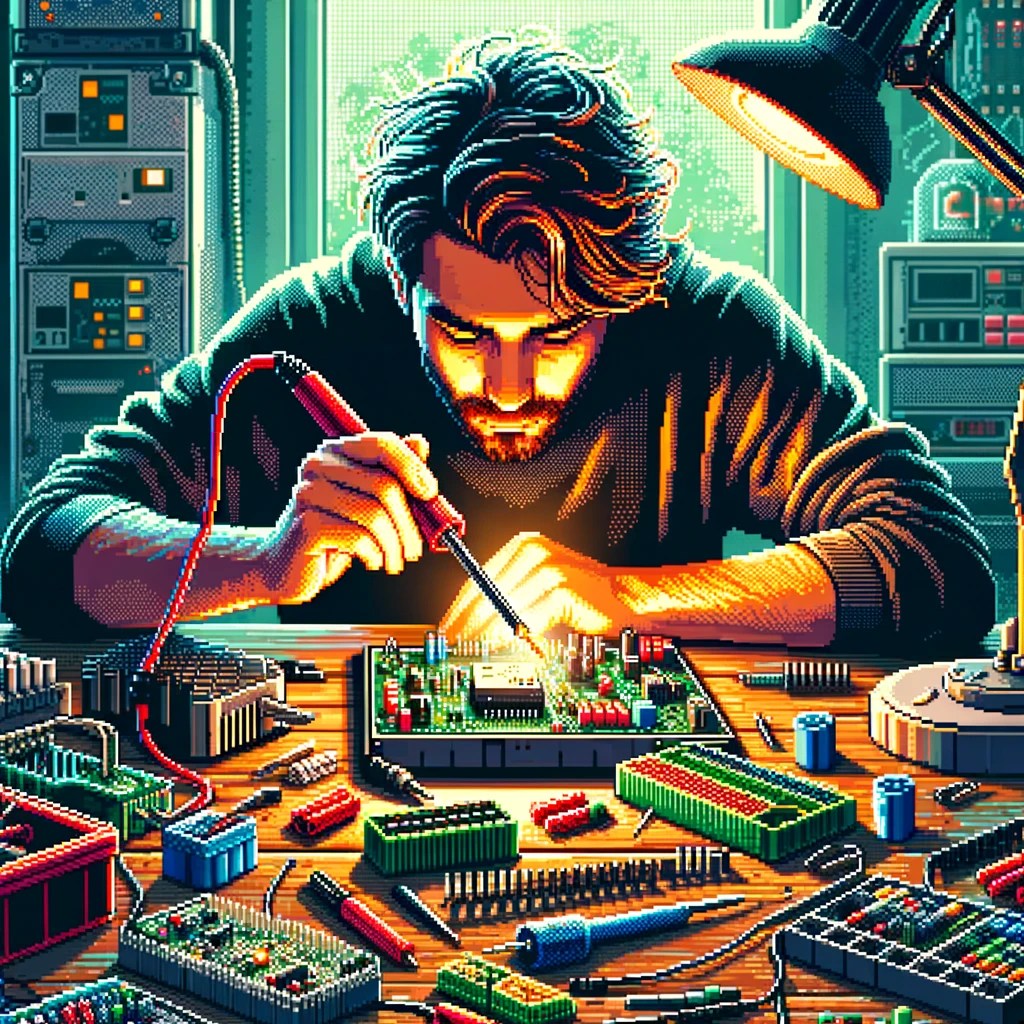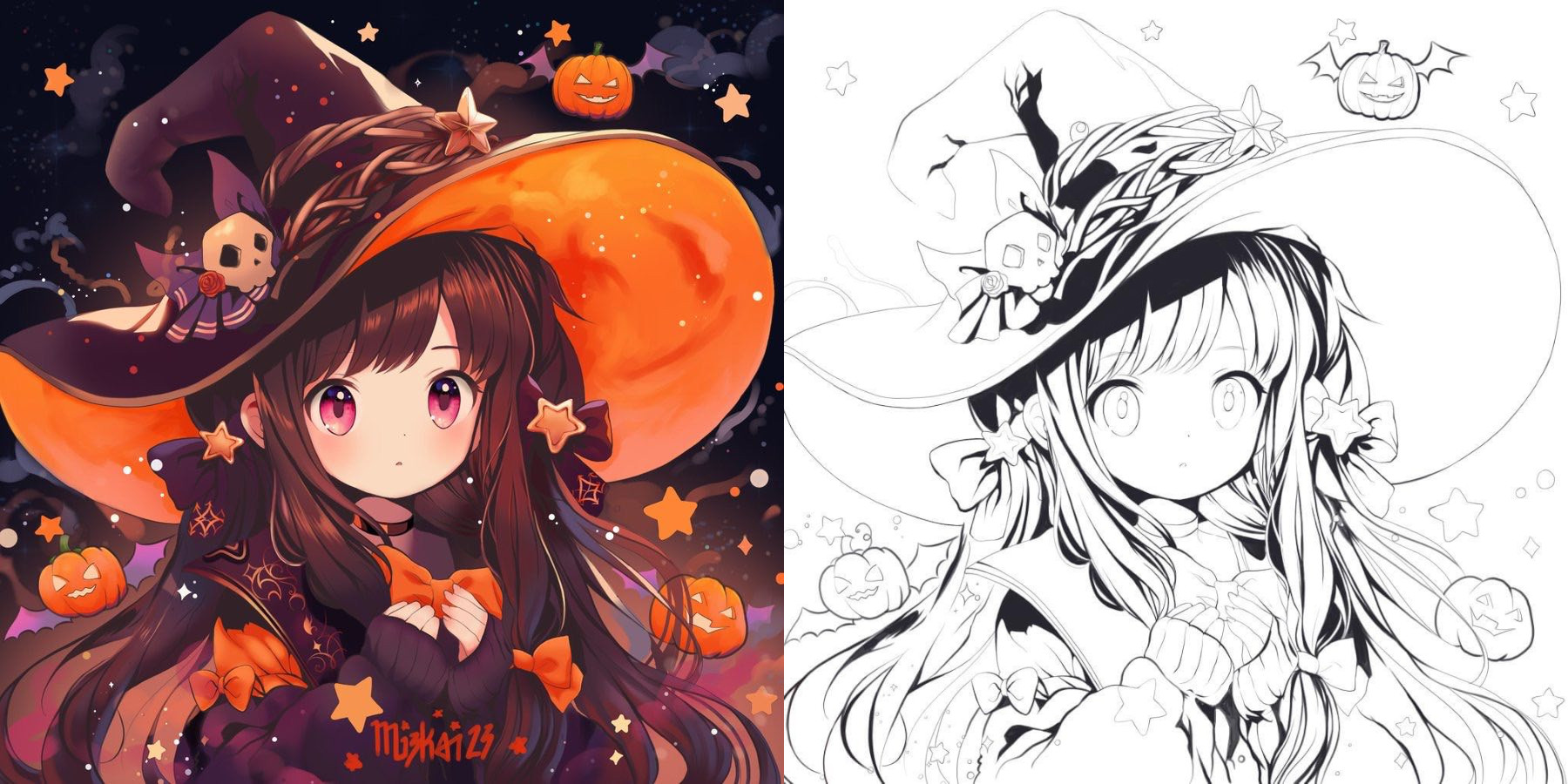
In the world of digital art, distinguishing between AI-generated and human-made creations has become a significant challenge. Almost overnight, tool sets for generating AI artworks became commonly available to the public, and suddenly, every digital art competition had to contend with potential submissions. Some have welcomed AI, while others demand competitors create artworks by their own hand and no other.
The problem facing artists and judges alike is just how to determine whether an artwork was created by a human or an AI. So what can be done?
Put It To The Test

First of all, it’s crucial to understand what AI art generators can and cannot do. These algorithms, often trained on vast datasets of human-made art, excel in pattern recognition and replication. However, they typically struggle with conceptual depth and the nuanced, often irregular, elements that human creativity can produce. They’re great at mashing up weird combinations, like creating a cartoon picture of cats surfing off the coast of Neo-Hawaii, for example.
They’re less good at refining a singular style and many AI image generators also often suffer with nuance and detail. For example, they may generate humans with too many teeth, or weird hands, or generate cars with door shut lines that make no sense or tail lights beyond human comprehension. Regardless, these image generators are still capable, and the best can create images that are very difficult to catch out as non-human in origin.
Herein lies the problem. Just looking at an artwork may not be enough to determine whether it was created by a human or an AI. There may be clues of course, but they could also be misleading. For example, was this drawing of a construction worker created by an AI, because of the weird hands, or was that a stylistic choice by the artist? It can be impossible to say with certainty one way or the other.
Ultimately, documentation of creation may be key for artists to prove they really created their own works. AI image generators tend to spit out a finished image without taking any intermediary steps. By contrast, a human drawing an artwork on a tablet, for example, will have made thousands upon thousands of strokes, created layers, applied effects, and so on. By capturing the creative process, or even just capturing snapshots of the art in progress, is the perfect way to prove a piece was created by a human.

Of course, even this is an imperfect science. AIs aren’t just limited to producing still art anymore, for example. It’s plausible that an AI could be created to generate images that appear as progress shots of a final artwork; it could even generate a fake screen-captured video. Even if this would be difficult today, it’s well within the realms of possibility given what we’ve already seen AI tools to be capable of. That might push artists into recording themselves sitting down as they create their art from start to finish just to have proof that their work is their own.
This is all well and good for digital drawing or painting disciplines, but it can fall apart beyond that. Let’s say you’re a photographer. How do you prove that an image you submit is your own? Footage of you holding a camera and pressing the shutter doesn’t really go a long way in that regard. For matters like these, more advanced techniques may be required. Tools could theoretically be developed to look for telltale signatures at the pixel level that reveal a particular AI image generator was used, but by that point, you’re getting way off into the weeds. Suddenly a black box is in charge of determining whose images are legitimate, and whose aren’t, and there’s always the potential for false positives or false negatives to ruin somebody’s day.
Case Study
For digital artist [Mizkai], this problem has already become very real. [Mizkai] entered an illustration contest in October, penning a Halloween scene with a young witch. After submission though, things went awry. “At first they said they suspected I had traced AI work as my style was inconsistent,” [Mizkai] told Hackaday. Trying to rectify the issue in good faith, [Mizkai] elected to try and sort the problem out with the competition organizers. “I said I’m happy to cooperate and provide them with evidence,” says [Mizkai], noting that she provided an original Photoshop file with layers intact, indicating she’d created the piece from scratch. When that wasn’t enough, [Mizkai] provided a range of other artworks including pencil drawings and inked pieces to bear out her case that she was indeed a real artist. When that wasn’t enough, she stepped up to providing time lapse videos of character sketches to show her technique.
After that, [Mizkai] says the panel allowed her entry to proceed with the voting process, only to backflip a short time later. “Only after the voting had closed, they decided to contact me again to say that they were disqualifying my entry as there was insufficient evidence,” says [Miskai]. The experience left her sour on the whole competition. “Honestly it has left me feeling deflated that despite jumping through all their hoops and cooperating with them completely they would still arbitrarily decide that my work is fraudulent,” says [Mizkai], adding “I honestly don’t want to compete in competitions in future and have been feeling like it’s just far too mentally draining to have to prove myself multiple times.”
It’s something that competitions will have to get serious about, and quickly. There must be hard and fast requirements for proof of creation if it’s deemed so important, and they must be presented up front. It’s no good challenging an artist’s creation afterwards, when they haven’t previously been instructed to record their process during the actual creation of a piece. It seems likely many artists will begin recording their work just in case. Regardless, it’s only fair to state the rules up front such that all competitors can compete on an even playing field without having their art unduly called into question.
For now, most art competitions will rely on competitors to play by the rules and only submit their own creations, come what may. Despite this, high-profile competitions have already publicly fallen victim to AI submissions, even handing over prizes in some cases. It’s hard to know how to put Pandora back in the box when AI image generators are getting so good at mimicking real human art. It may ultimately be a battle the humans are going to lose.


